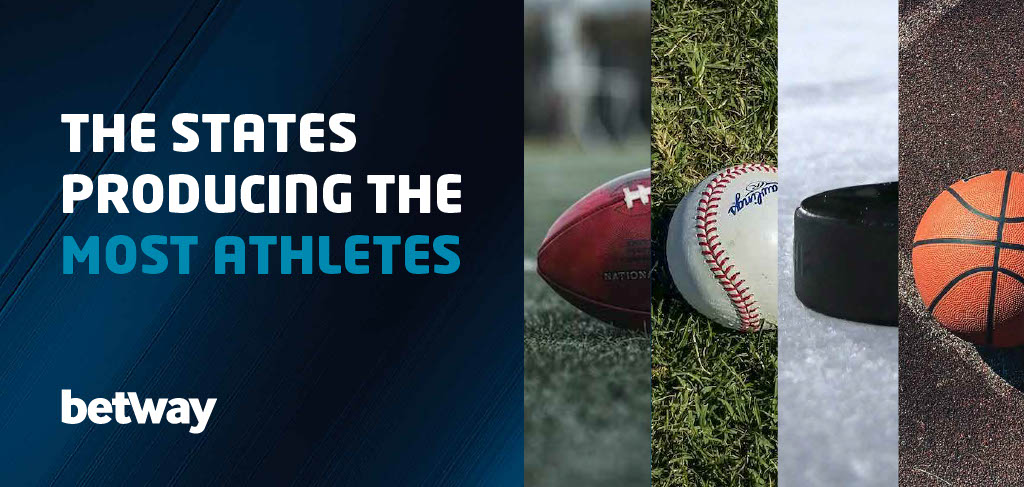Andre De Grasse on what it's like to run in an Olympic 100m final

In our exclusive interview, the three-time Olympic medalist relives his battle with Usain Bolt in 2016 and looks ahead to this summer's Games in Tokyo.
Moments before the 100m final at the 2016 Olympic Games in Rio, Andre De Grasse took his spot in lane 7.
Competing in his first Olympics at the age of 21, there was already plenty of pressure on the Canadian sprinter without even considering the fact that standing in the lane next to him was Usain Bolt, about to race in the last Olympic 100m final of his career.
“I was just out there focusing on myself and trying have fun in the moment,” De Grasse says.
“You try not to think about who you're racing, you just try to focus on yourself. That can obviously get you nervous, if you're focusing on other people, like: ‘Oh, I can't believe I'm racing this person,’ or ‘this person is so fast’.
“You just have to block all that out and tell yourself: ‘Hey, I'm fast, too.’”
In the following 10 seconds, De Grasse proved to everyone just how fast he is.
While Bolt ran away with the third Olympic 100m gold of his career, the Canadian overcame a slow start to take bronze, just the third medal in the event in his nation’s history.
He followed that up with a silver in the 200m a few days later, before his anchor leg helped Canada take bronze in the 4x100m relay.
Now, as he makes the final preparations for his second Olympics in Tokyo this summer, De Grasse reflects on that 100m final night in Rio.
“When I got into the blocks, everything was kind of a blur,” he says. “My adrenaline was going, everything was loud, my heart was racing. I was pumped but I just tried to breathe and calm myself down and just try to execute.
“[Claiming bronze] felt amazing. I just couldn't believe that I did this, like, it's crazy. Dreams do come true if you work hard.
“I was just so happy to get on that podium and bring back a medal for Canada. Not a lot of people have Olympic medals.”
De Grasse is, again, one of the major contenders in the sports betting to earn a medal in both the 100m and 200m in Tokyo this summer.
Now 26 and with a World Championship silver and three bronzes to his name, he is one of the most decorated Canadian sprinters ever and the face of his nation’s athletics team as they head to Japan.
While these are officially the 2020 Tokyo Games, they are taking place 12 months later than expected after the Covid-19 pandemic forced a one-year postponement.
Athletes typically gear all their training towards the Olympics and the World Championships. Diamond League events throughout the season are used, De Grasse says, as “stepping stones” for building fitness and comparing yourself against your opposition.
As a result, the rescheduling of the Games has had a major impact on preparation for De Grasse and thousands of athletes like him.
He explains, however, that while the delay affected his fitness earlier in the year, an extra year of preparation has also had its benefits.
“Of course, it disrupted training and you kind of have to start from square one again,” he says. “I came off a good year and I was trying to just build off of the World Championship. Now you're having to work a bit harder and train a bit harder to get back that fitness.
“But I think the rest helped me mentally as well, because training is very rigorous and it's very stressful at times when you're going through injuries and stuff like that.
“So I think it was good for my body to get that good, proper rest, and then just try to refocus my mind again, and reset it to get ready.”
De Grasse’s training is particularly rigorous because, like Bolt, he competes in both the 100m and 200m.
He is one of five sprinters to have earned a medal in both events at a single Olympic Games since 2000, and is the only athlete to have medaled in either event in 2016 who has gone on to compete in Tokyo this year.
While the races are similar, they require very different training and many more hours spent on the track, which is why most elect to focus on one discipline.
“I train six days a week so it's kind of half and half,” De Grasse explains. “Three days of the week, you work on the 200m and three days you work on the 100m. It's difficult to master both events. Not a lot of people do it in the world.
“With the 100m you’ve got to work on coming out the blocks. And then with the 200m you’ve got to work on speed endurance, so you’ve got to do a lot more longer runs, 250s, 300s, to build your stamina and your fitness.
“My coach does a really good job of just trying to help me prepare for those situations, what to expect and how it is when you're trying to go through the rounds because there's going to be six races. It takes three races to get to the finals in the 100m and another three rounds to get to the 200m finals.
“It's going to be very difficult, and sometimes it takes away a lot. Where a different athlete might only have to train maybe four to five days a week, I'll have to train six.”
The big difference between Rio and Tokyo is, of course, the absence of fans inside the stadium at this year’s games.
Tokyo declared a state of emergency earlier in July, forcing organisers to move the event behind closed doors.
De Grasse says the atmosphere inside the stadium played a big part in motivating him when taking on the likes of Bolt, Justin Gatlin and Yohan Blake in Rio five years ago, but he hopes to find other ways of getting pumped up this summer.
“Fans definitely help,” he says. “It keeps you going.
“It's crazy. Your adrenaline starts going and everything just starts clicking. You just feel your groove. If you're feeling good, your confidence is high, like everyone's here to see me perform.
“This time around, of course, there will be no fans, so I don't know what to expect.
“But hopefully I can channel that energy, whether that's the fans at home, getting messages of support through FaceTime or text message.
“Hopefully there's some type of a light show or music playing that can pump us up and get us going.”
If De Grasse does get going, there’s a good chance he’ll add to his medal haul and perhaps even earn Canada’s first sprint gold since Donovan Bailey won the 100m final in Atlanta in 1996.
























